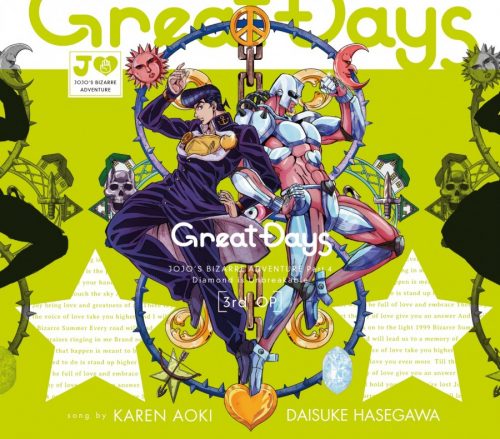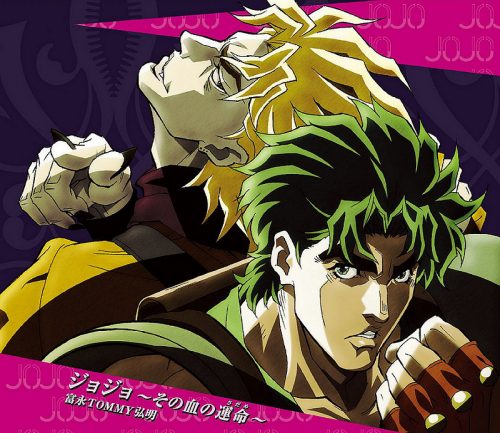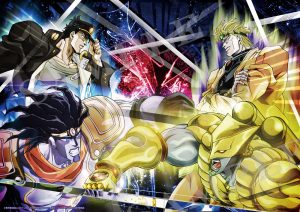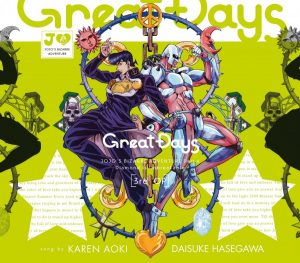
As we shared in part 1, we talked about why the series is named JoJo and how both the manga and present anime’s stories are structured. For this edition, we wish to explore other qualities of the franchise such as the references to pop culture, and how in turn, it has been an influence on pop culture.
Music References

As many fans can tell just by listening to the Japanese version, many characters and Stands take influence from Western music between the seventies and now (mostly modern in context to when a manga story debuts). In the first story arc, two names that stand out are Robert EO Speedwagon (Jonathan’s companion) and Wang Chan (Dio’s main henchman), obvious references to REO Speedwagon and Wang Chung, who were popular in 1986. As for Dio, the main villain to the first and third story arcs, he is named after Dio, the band lead by Ronnie James Dio. In the third story arc, Dio has more henchmen named after famous bands and musicians such as Oingo Boingo, Vanilla Ice, Enya, and Steely Dan.
In the second story arc, the Pillar Men’s names are homages to other bands such as Santana, AC/DC, The Cars, and Wham. As previously stated, some of the names from pop culture are extended to Stands in addition to characters. This is first emphasized in Diamond is Unbreakable with numerous references to Pink Floyd. For starters, the Echoes and Crazy Diamond stands which are possessed by Koichi and Josuke are references to Pink Floyd songs. And early on in the series, the heroes fight a stand that is named Red Hot Chili Peppers, and much of Kira Yoshikage, the main villain’s stands, are references to Queen.
In the fifth story arc, it pays homage to the late great Prince (though the design of Josuke from the fourth arc does take influence from him) with Giorno’s Stand, Gold Experience, and when Narancia initiates the torture dance, the song that is played is an obvious take on Prince’s Pussy Control. When you watch the dance, you obviously can see dance moves that takes inspiration from Prince and Michael Jackson. Speaking of Narancia, one of his stands happens to be named Aerosmith, named after the legendary rock band. As for Giorno, he is named after Giovanna Giorno Moroder, an actual Italian musician.
In the present story arc of the manga, JoJolion, we have Stands with the names that appropriately take influence from modern musicians in the same manner that the previous arcs use musicians from their times. In JoJolion, one Stand is named Born This Way, a homage to Lady Gaga’s hit, and there is another Stand named California King Bed, a hit by Rihanna.
Anime Soundtrack

Due to the these music references, properly animating the JoJo franchise where sounds plays a significant role, a quality soundtrack is necessary to add to the experience you can’t get in manga. In the first two story arcs, 1972’s Roundabout by Yes serves as the first opening theme. This was used as the ending theme because when Araki first started working on the manga, he often listened to this song and used it as an ending theme is a great throwback to how the manga was conceived. Later on in the manga, there are more references to Yes when Daiya, a character from JoJolion, quotes Heart of the Sunrise, another big hit by them.
In the first half of Stardust Crusaders, Walk Like An Egyptian by The Bangles served as the first ending theme to reference how the team has to go to Egypt to stop Dio, and Last Train Home by Pat Metheny Group serves as the second ending theme. For those that are familiar with the manga, it is easier to appreciate and comprehend the use of the songs and the imagery that foreshadows the coming events. But in a select number of episodes, Oingo Boingo provided the ending themes as fan service for viewers to enjoy. In the anime adaptation to Diamond is Unbreakable, I Want You By Savage Garden served as the ending theme while Jodecci’s Freek’N You is the ending theme to Golden Wind, the present anime series.
Final Thoughts
Though JoJo takes so much from pop culture, a lot of manga, games, and anime have taken influence from JoJo as well. If you remember the old Fox series Heroes, Hiro said that he happened to be a fan of JoJo and references Dio on the show’s website. It was interesting to see Western pop culture take influence from JoJo long before the present carnation of the anime was ever conceived. But in Japan, they have been paying homage to it forever. For example, Persona 4 takes a lot of influence Diamond is Unbreakable with its plot by taking place in a small Japanese town and the Persona powers are influenced by the Stands. And you can say that Persona 5 does share some qualities with Golden Wind as well by having a group of teens wanting to fight the system to make their world a better place.
For those that (probably) didn’t know, the design of Guile, the All American in Capcom’s Street Fighter, happens to ironically be inspired by Stroheim, the Nazi cyborg that teams up with Joseph! However, there is a lot more influence than Street Fighter than you can imagine! In addition to Guile, Rose from the Alpha series takes influence from Lisa Lisa, Gill and Yurien from Street Fighter III take influence from the Pillar Men, and Juri is based on Jolyne from Stone Ocean (which has yet to be animated). Taken into consideration how JoJo has influenced these games, we think it would be best for our next edition to JoJo Explained, we shall talk about the franchise’s video games.
To Be Continued...
Recommended Post
jojo no kimyou na bouken
Recommended Post





